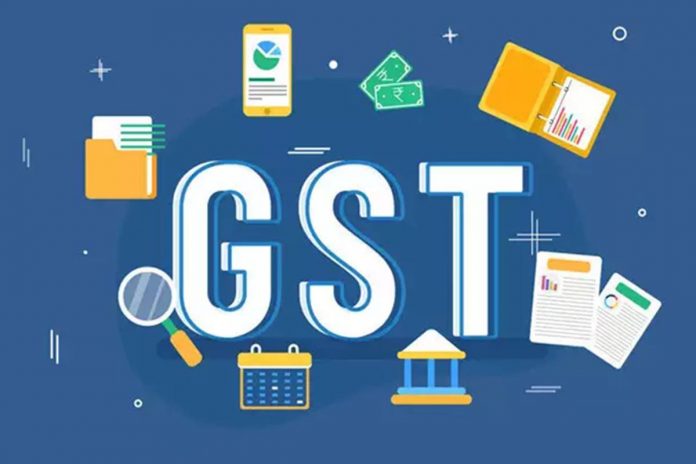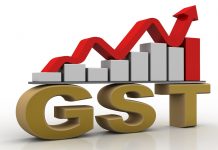This article has been written by Aditi Sahu pursuing the Diploma in Business Laws for In-House Counsels from LawSikho. This article has been edited by Aatima Bhatia (Associate, Lawsikho) and Ruchika Mohapatra (Associate, Lawsikho).
Table of Contents
Introduction
A company may operate in many parts of India, necessitating multiple large GST enrolments. GST is a goal-based tariff model, and thus the charge is collected based on the destination state address. Similarly, GST is required on value addition along with every movement; consequently, it is critical to obtain a GST enrolment when you have various businesses running in different parts of the country. GST is an indirect tax that collects all taxes, whether direct or indirect, under one umbrella. The GST registration number includes PAN information, which is used to deal with direct taxes. For the time being, the GST Act prohibits any taxpayer from obtaining two GST numbers against a single PAN card, if the trade-in non-exempt goods and services is restricted to a single state or union territory. On the other hand, if the supplier engages in inter-state trading, he or she can obtain separate GST registration for both states, i.e., two GST registrations on a single PAN card. In this article, we deal with the issues related to GST and discuss the situation when a business requires multiple GST registration.
What is GST?
The Goods and Services Tax (GST) is a national, uniform indirect tax on goods and services. GST, as an umbrella tax, replaced various central taxes such as central excise, service tax, excise, and customs additional duties, special excise and customs additional duty, and cesses and surcharges on the supply of goods and services.
In other words, the Goods and Services Tax (GST) is levied on the provision of goods and services. The Goods and Services Tax Law in India is a multi-stage, destination-based tax levied on every value addition. The Goods and Services Tax (GST) is a single domestic indirect tax law that applies to the entire country.
The Goods and Services Tax (GST) is divided into four different heads. These are:
- Central Goods and Services Tax (CGST): The CGST is a tax levied by the Central government on intra-state sales of goods and services. Central taxes such as Central Excise Duty, Customs Duty, and Service Tax were abolished after the establishment of the Central GST.
- State Goods and Services Tax (SGST): The SGST is levied on products and services sold inside the state (intra-state). Value Added Tax (VAT), Entertainment Tax, Entry Tax, State Sales Tax, and any applicable surcharges were all replaced by the SGST. The SGST revenue is directed to the state government.
- Integrated Goods and Services Tax (IGST): The IGST is levied on interstate transactions of goods and services. The IGST money is shared among all of the states. The IGST was designed to simplify the tax system and ensure that each state only deals with the Central government.
- Union Territory Goods and Services Tax (UTGST): The UTGST is levied on products and services provided in the union territories of Chandigarh, Andaman and Nicobar Islands, Daman and Diu, Dadra and Nagar Haveli, and Lakshadweep. UTGST is collected at the same time as CGST.
Types of GST registration
In India, taxpayers can avail different types of GST registration according to the nature of their business. Therefore, some major forms of GST registration are:
- Normal GST registration– Businesses with a turnover of more than ₹ 40 lakh in a fiscal year must register as a normal taxable person. However, if you own a business in the northeastern states of J&K, Himachal Pradesh, or Uttarakhand, the threshold limit is ₹ 20 lakh.
Other than the restaurant industry, taxpayers are involved in the service industry. Regular scheme taxpayers must file monthly returns. GSTR 3B and GSTR 1 must be filed at the moment. GST input tax credit is available to regular taxpayers when they purchase goods or services, or both.
- Composition scheme– The composition scheme is a straightforward GST scheme for taxpayers. Small taxpayers can avoid time-consuming GST formalities by paying GST at a fixed rate of turnover.
The Composition Scheme is available to taxpayers with a turnover of less than Rs 1.5 crore. The threshold limit is ₹75 lakh in the case of North-Eastern states and Himachal Pradesh.
This scheme is not available to the following people:
- Ice cream, pan masala, or tobacco manufacturer;
- A person who makes interstate supplies;
- A non-resident taxable person or a casual taxable person;
- Businesses that sell their goods via an e-commerce platform;
- Availing input tax credit on the purchase of goods and services, or both.
A tax invoice cannot be issued by a composition dealer. This is because a composition dealer is not permitted to charge tax to their customers. They must pay tax from their own pockets. As a result, the dealer must issue a Bill of Supply. To use the composition scheme, a taxpayer must submit a GST CMP-02 form to the government by logging into the GST Portal.
GST rates for the composition dealers are:
- Manufacturers and Traders of goods- 1% of turnover
- Restaurants (not serving alcohol)- 5% of turnover
- Other Service providers- 6% of turnover
- Input Service Distributor– Input Service Distributor must register as an “ISD” in addition to registering as a regular taxpayer under GST. Such a taxpayer must identify himself as an ISD under serial number 14 of the REG-01 form. Only after this declaration will they be able to distribute the credit to the recipients.
ISD does not have a registration threshold limit. All existing ISDs will be required to obtain new registration under the new regime to continue operating as an ISD. Input tax credits for input services shall be distributed by ISD only to registered persons who used the input services in the course or furtherance of their business.
- Special Economic Zone (SEZ) Developer– According to the GST law, if a person has a business unit in a Special Economic Zone, the entrepreneur must file a separate registration application as a business vertical. While the person’s other business unit, which is located in a non-SEZ zone, is subject to normal state registration under the GST law.
For example, if a company has 4 units in SEZ locations and the remaining 3 units in the Domestic Tariff Area (DTA), the company must register for a total of 5 registrations (4 for SEZ and 1 for DTA) under the GST law.
When it comes to taxes, being in an SEZ can be beneficial to some extent. Any provision of products or services, or both, to a developer or unit in a Special Economic Zone, shall be regarded as a zero-rated supplier. As a result, these shipments are subject to a 0% GST rate. To put it another way, supplies into SEZ are GST-free and count as exports. As a result, providers of commodities to SEZs can:
- Supply under a bond or LUT without paying IGST and claiming an ITC credit; or
- Supply with IGST paid and claiming a refund of taxes paid.
When an SEZ provides products or services to anyone, it is deemed an ordinary inter-state supply and is subject to the IGST.
- Tax Deducted at Source (TDS)– According to Section 51 of the Goods and Services Act, the TDS rule applies to payments made to suppliers by the government, government undertakings, and other notified entities where the total value of the supply under a contract exceeds Rs. 2.5 lakhs. The competent Government/authority must withhold 2% of the total payment made (1 percent under each Act and 2% in the case of IGST) and remit it to the appropriate GST account when making payments under such contracts.
TDS (Tax Deducted at Source) is a method of collecting tax based on a proportion of the amount owed by the receiver on goods or services. The tax is a source of revenue for the government. Anyone who is required to deduct TDS is required to register, and there is no threshold limit for this. The current Tax Deduction and Collection Account Number (TAN) granted under the Income Tax Act can be used to register for GST without the need for a PAN. Having a TAN is thus required.
The value of the supply is to be taken as the amount excluding the tax mentioned on the invoice for the TDS deduction. This indicates that TDS will not be deducted from the invoice’s CGST, SGST, or IGST components.
For example, supplier P makes a ₹50000 supply to Q. GST is charged at a rate of 18%. When Q pays P, he will pay ₹ 50000 (supply value) + ₹9000 (GST) to P and Rs. 1000 (RS. 50000*2%) to the government as TDS. As a result, TDS is not deducted on a transaction’s tax element (GST).
Benefits of GST registration
There are various advantages or benefits if a business gets registered under GST. These benefits are:
- Recognized as a legal supplier of goods or services.
- Accounting for taxes paid on input goods or services that can be used to pay GST due on the supply of goods or services, or both, by the business.
- Legally authorized to collect taxes from his customers and credit the taxes paid on the goods or services supplied to customers or recipients.
- Obtaining eligibility for various other GST-related benefits and privileges.
Penalty for not having GST registration
Section 122 of the CGST Act states that any taxable person who fails to register for GST, even if legally required to do so under the GST Act, must pay the following penalty:
- 10,000 INR or the amount of tax evaded (whichever is higher)
For example, If Mr. A fails to obtain GST registration and his total tax evasion exceeds 30,000 INR, a 30,000 INR penalty will be imposed.
When a business requires GST registration?
All businesses that supply goods and have a turnover of more than INR 40 lakh in a fiscal year are required to register as normal taxable persons. However, if you own a business in the northeastern states of J&K, Himachal Pradesh, or Uttarakhand, the threshold limit is INR 10 lakh. For service providers, the turnover limit is INR 20 lakh, and in special category states, INR 10 lakh.
In addition, regardless of their annual revenue, the following businesses must register for GST:
- Input Service Distributor (ISD): A taxpayer who receives invoices for services used by its branches is known as an Input Service Distributor (ISD). It issues ISD invoices to distribute the tax paid, known as the Input Tax Credit (ITC), to such branches on a proportional basis. The branches may have different GSTINs, but they must share the same PAN as ISD.
- Casual Taxpayer: A Casual Taxable Person (CTP) is someone who provides taxable goods or services periodically in a taxable territory where he does not have a permanent location. The person can supply goods or services for business as a principal or agent, or in any other role.
- A taxpayer who is not a resident of India (Non- resident): Individuals who live outside India but occasionally supply goods or services to Indian residents as agents, principals, or in other capacities are required to register under this category.
During the GST active tenure, the business owner must pay a deposit equal to the expected GST liability. The typical tenure is three months. Individuals can, however, extend or renew their registration if necessary.
- Supplier of goods and services from another state (Inter-State Supply): Interstate supply is subject to the Integrated Goods and Services Tax, or IGST, under GST.
For example, suppose an electronics store in Maharashtra sells a laptop worth Rs.100000 to a customer in Karnataka, and the sale is subject to an 18% IGST rate. The invoice for the sale must include Rs.18000 in addition to the total value of the product.
- Any service provider who sells goods through an e-commerce portal: An e-commerce operator is also defined as anyone who owns, operates, or manages an electronic platform that facilitates the supply of any goods or services, whether directly or indirectly. Under the TCS mechanism, an e-commerce company must deduct tax at a rate of 1% of the net value of taxable supplies. The same tax must be paid to the government.
- Under the reverse charge mechanism: In most cases, the supplier of goods or services is required to pay GST. However, in certain circumstances, such as imports and other notified supplies, the liability may be shifted to the recipient via the reverse charge mechanism. In the case of specified categories of supplies, reverse charge means that the person receiving the goods/services is liable to pay the tax rather than the person supplying the goods/services.
- Deductor of TDS/TCS: A TDS deductor is required to register without any threshold limit. The deductor has the option of registering for GST without providing a PAN. He can register by using his Tax Deduction and Collection Account Number (TAN) issued by the Income Tax Act of 1961.
- Provider of online data access or retrieval services (OIDAR): The supplier (or intermediary) of online information and database access or retrieval services shall, for payment of integrated tax, take a single registration under the Simplified Registration Scheme in Form GST REG-10. The current GST rate on the sale of most digital products and services that fall under this category is 18%. How GST is levied, however, is dependent on whether the provider is headquartered in India or outside India.
Multiple GST registration
If a business operates in more than one state, a separate GST registration is required for each state. For example, if a sweet seller sells in both Maharashtra and Madhya Pradesh, he must apply for separate GST enrolment in each state. Conditions for multiple GST registration on one PAN:
- Taxpayers must engage in interstate supply.
- A person who manages multiple locations in a given territory must obtain a separate registration.
- Any branch of a company operating under the composition scheme is not permitted to obtain a separate GST registration.
When do businesses require Multiple GST registration?
- Separate registration for multiple business verticals within a State or a Union territory
- According to Section 25(2) of the CGST ACT,2017, “a person carrying on business with several business branches or verticals in a single State or Union territory may be granted a different registration for each different business branch or vertical subject to some specific conditions and rules.”
This means that two distinct businesses can be operated with Multiple Registration under GST within the same state or union territory using the applicant’s PAN.
- Rule 11 of the 2017 CGST Rules: The act’s rules make specific provisions for receiving different GSTINs for different business branches or verticals within the same state or union territory. The following instructions were provided by Rule 11(1) of the ACT to obtain registrations for the new business vertical:
- A person wishing to obtain a separate GSTIN must have more than one business branch that meets the requirements of the definition in section 2(18) of the ACT.
- If another branch has already been registered under the same person, the registration will be rejected.
- Section 9 states that all differently registered verticals and branches of such a person are required to pay tax under the ambit of the act on the supply of goods and services to other such registered business verticals or branches of such a person and to issue an invoice for it.
- According to Rule 8(1) of the CGST Act 2017, any person with a business registered in a Special Economic Zone[1] or an SEZ developer must submit a separate application as a vertical to be recognized outside of the SEZ for separate GST registration.
- Places of Businesses in two different State or Union Territories
As per the provision of subsection (1) of Section 25 of the CGST ACT, 2017, “Everyone must apply for a GSTIN in each State or Union territory where he or she is required to register.”
This means that if you have locations in two different states or union territories, you must register in both states and union territories. For example, if a person operates from Ahmedabad and has a subsidiary office in Bangalore, he or she must obtain two GST Registrations for the two locations. The PAN is valid for registration in both states.
Conclusion
In conclusion, we can say that the provision for two GST registrations is entirely feasible and practical. It’s also a matter of personal preference whether two GST registrations can be completed with a single PAN card. This occurs when a person operates many business verticals in the same state or UT. Taxpayers who seek separate registration for inter-state supplies or multiple business verticals do not need to take different approaches for approval. The registration process is similar in this case as well. It’s also a matter of personal preference whether two GST registrations can be completed with a single PAN card. This occurs when a person operates many business verticals in the same state or UT.
References
- https://www.business-standard.com/about/what-is-goods-and-services-tax
- https://www.bankbazaar.com/tax/gst.html
- https://cleartax.in/s/tds-under-goods-and-service-tax#:~:text=A%20person%20who%20is%20liable,said%20having%20 TAN%20is%20mandatory.
- https://gstportalindia.in/types-of-gst-registration-for-indian-taxpayer/
- https://corpbiz.io/learning/provisions-for-availing-2-gst-registration-on-one-pan-card/.
Students of Lawsikho courses regularly produce writing assignments and work on practical exercises as a part of their coursework and develop themselves in real-life practical skills.
LawSikho has created a telegram group for exchanging legal knowledge, referrals, and various opportunities. You can click on this link and join:https://t.me/joinchat/J_0YrBa4IBSHdpuTfQO_sA
Follow us on Instagram and subscribe to our YouTube channel for more amazing legal content.
 Serato DJ Crack 2025Serato DJ PRO Crack
Serato DJ Crack 2025Serato DJ PRO Crack











 Allow notifications
Allow notifications



